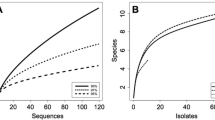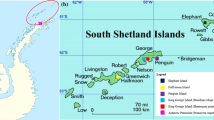Mediterranean ecosystems have not been consistently investigated as natural habitats for microbes in general, and fungi in particular. Here we present the results of a survey of epiphytic mycobiota (filamentous fungi and yeasts) on the phylloplane of selected plants in the Arrábida Natural Park, an ecosystem of Mediterranean characteristics in Portugal, using conventional culture-dependent isolation methods. Leaves from the species Acer monspessulanum and Quercus faginea (deciduous trees) and Cistus albidus, Pistacia lentiscus, and Osyris quadripartita (evergreen shrubs) were collected twice a year for two consecutive years, at two distinct locations of Serra da Arrábida: the more humid northern slope and the drier southern slope. A total of 1029 strains of filamentous fungi and 540 strains of yeasts were isolated, which represented at least 36 and 46 distinct species, respectively. Total counts were higher on the plants from the northern slope and there was a general increase from spring to autumn, notably on the deciduous trees for the yeasts. Plant species that had higher numbers of leaf colonists (A. monspessulanum, C. albidus, and Q. faginea) also yielded a wider range of species. Among the filamentous fungi there was a predominance of species of ascomycetous affinity, whereas basidiomycetous species dominated among yeast isolates. Some of the taxa recovered were common to other phylloplane studies (e.g., ubiquitous molds and yeasts such as Cladosporium spp. and Cryptococcus spp., respectively), but less common species were also found, some of which appeared to represent undescribed taxa. Interestingly, a few species seemed to be associated with a particular plant, notably in the case of the evergreen shrub C. albidus. However, for a considerable number of fungi and yeasts the same taxon was recovered throughout the year from more than one plant and at both sites, suggesting that such species might be genuine phylloplane inhabitants (or at least of aerial plant surfaces) even though they appeared not to display host specificity.
Similar content being viewed by others
Author information
Authors and Affiliations
Rights and permissions
About this article
Cite this article
Inácio, J., Pereira, P., Carvalho, M. et al. Estimation and Diversity of Phylloplane Mycobiota on Selected Plants in a Mediterranean–Type Ecosystem in Portugal . Microb Ecol 44, 344–353 (2002). https://doi.org/10.1007/s00248-002-2022-z
Received:
Accepted:
Issue Date:
DOI: https://doi.org/10.1007/s00248-002-2022-z




